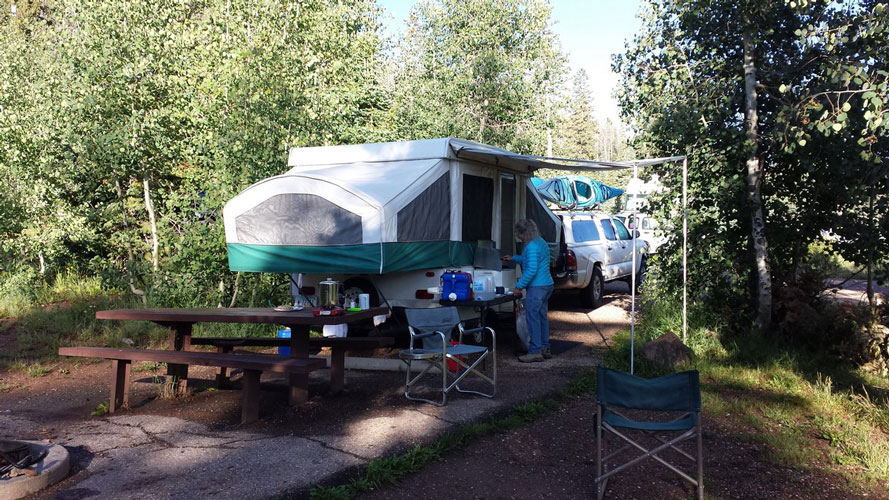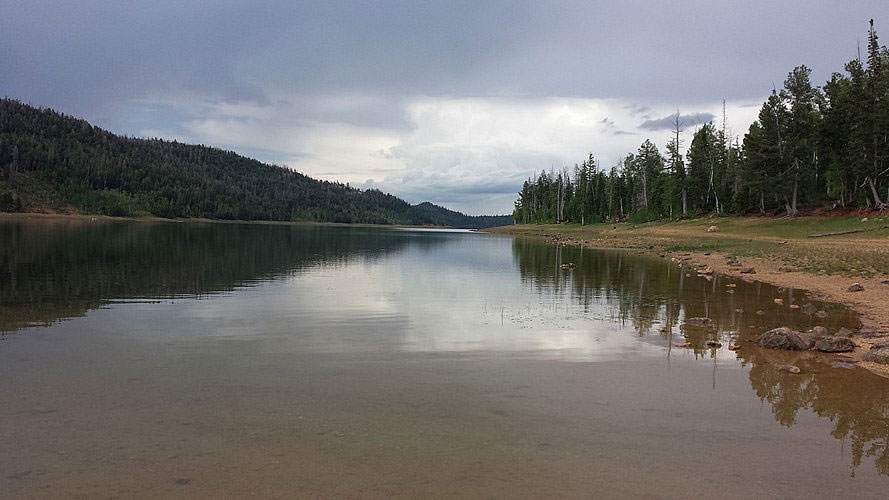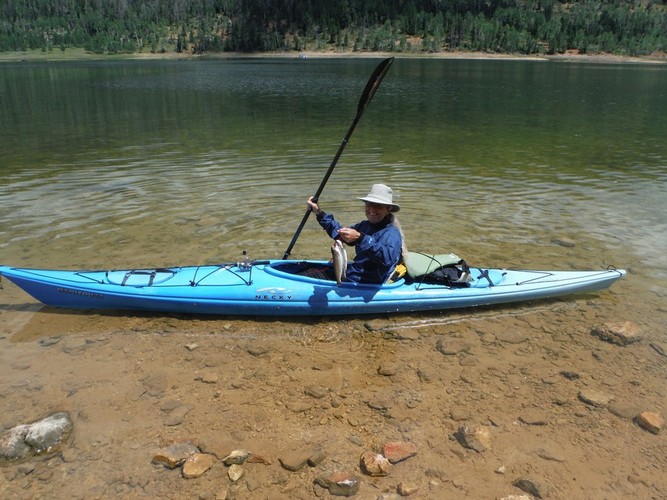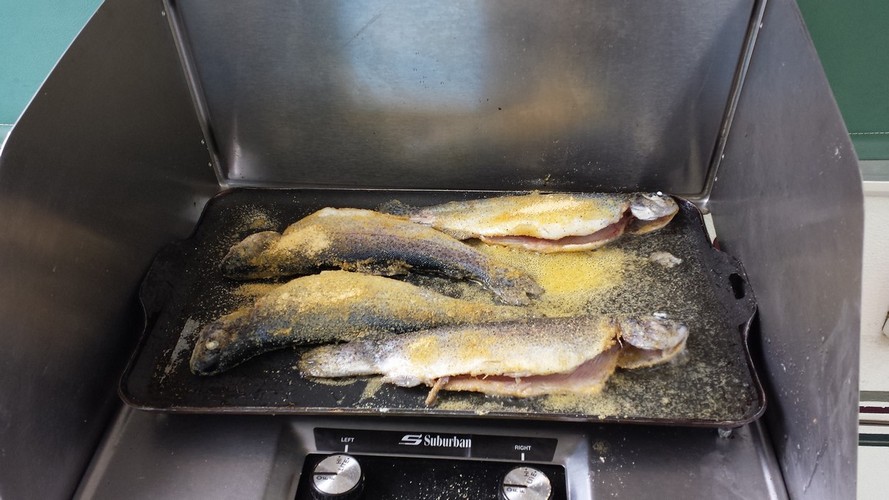Paddling Navajo Lake Utah
In July of 2018, my wife and I had planned a road trip to explore parts of northern Utah that we had not been to before. A very large forest fire in the area that we had wanted to travel to made it necessary to come up with a plan B. The decision was made to locate a place in the southern part of the state and then evaluate from there where to go next. On a map of Utah, Navajo Lake, northwest of Kanab, seemed like a good starting point. Its elevation of 9035' would mean cooler temperatures, and the lake would give us a chance to get out in our kayaks. We enjoyed the area so much that we spent 5 days there.
Navajo Lake is located on the Markagunt Plateau northwest of Kanab and is approximately 25 miles east of Cedar City. The lake, which has a surface area of 700 acres is approximately 2 1/2 miles long. It is a natural impoundment that was formed when a lava flow created a dam across the Duck Creek drainage. Outflow is entirely underground through a system of sinkholes at the eastern end of the lake. A dike was constructed in the 1930s to keep the lake water from reaching the sinkholes when water levels are low. When the lake levels are high, the dike is submerged and the lake can drain. The flow at Cascade Falls, which are just below the Pink Cliffs Rim, comes from water that has drained out of the lake. The falls are considered to be the headwaters of the Virgin River.
 |
Primitive camping is allowed in the Dixie Forest near the lake. But, because of the rainy weather the area was exeriencing, we decided to camp in one of the lakeside campgrounds. Several spots were available at the Navajo Lake Campground. At the elevation of the lake, the forest trees are primarily spruce and aspen. Unfortunately, spruce bark beetles have killed many of the spruce trees. The forest service has removed the dead trees from the campgrounds so the camp areas are now generally open and sunny. We did locate a spot with some shade.
 |
There is a dirt launch ramp at the Navajo Lake Campground. It is not necessary to use the launch with kayaks. Parking is allowed at the water's edge, so the carry to the put-in can be only a few feet.
 |
The paddling on the lake was very relaxing. The lake setting is very scenic. I am not sure of the regulations for power boats on the lake, but all of those that we encountered were operated by fishermen. There were no jet skis.....
By mid-mornng on each of the days that we were here, the clouds would roll in and the rain would begin shortly thereafter. So early morning paddles became our routine.
 |
We could not resist trying our hands at fishing. At Duck Village, a few miles east of the lake, we were able to purchase 3 day, out of state licenses for $24. Enough trout were enticed to bite that we were able to have a couple of fish dinners.
 |
 |
There are other sights to take in around Navajo Lake. Unfortunately, the long lasting afternoon rains limited where we could go. One afternoon, we were able to catch a break for a couple of hours and were able to walk around a small scenic lake near Duck Village. Its name was Aspen Mirror Lake. No boats were allowed here. This area seemed popular with walkers and bank fishermen.
On our trip through Utah, we had decided to avoid the big national parks like Zion and Bryce Canyon. A few miles west of Navajo Lake is Cedar Breaks National Monument. It is a smaller version of Bryce Canyon with a lot fewer people! We had wanted to drive to Brian Head north of there, but heavy rainfall once again stymied those plans.
On another afternoon, we went for a ride down off the plateau to Cedar City. This was a very scenic drive.
On another ride out from Navajo Lake, we traveled north to Panguitch Lake. The setting of that lake was not as appealing as Navajo Lake. Not too far from Panguitch Lake is Mammoth Spring and Mammoth Creek. This spring has the largest discharge rate of any spring in Utah at 314cfs. Above the spring, the canyon bottom is dry. Below, it is this full flowing stream. The difference in the nature of the creek over such a short distance is very dramatic.
We were really pleased with our stay in the area of Navajo Lake and will return to try and make it to some of the places that we missed on our first visit.